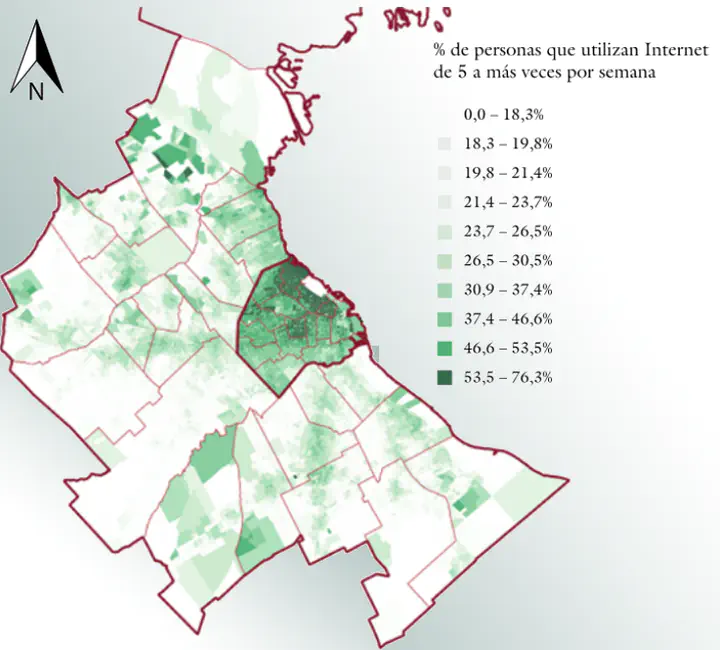Smart Cities, Digital Divide, and Space
Evidence from the Case of the Greater Buenos Aires Agglomerate

Abstract
The smart city brand was installed globally in the late 2000s with the launch of the Smarter Planet Agenda. Since then, the smart city brand has organized the aspirations of many local governments around the globe. Despite its growing importance, the conditions of Latin American cities, in general, and Argentinian once for their transformation into smart cities continue to be a poorly studied issue. The article investigates some of the main factors that affect the implementation of the smart city’s proposal in the context of Argentinian cities. The empirical research analyzes the Greater Buenos Aires agglomerate -the biggest urban area in the country- under the microscope of the smart city to evaluate from a quantitative perspective some of the main factors that affect its levels of urban intelligence. The access to digital technologies, the intensity, and modalities of electronic device use are analyzed, considering population sex, age, and spatial distribution. Based on the results, the concept of the smart city is reviewed, offering a balance between the possibilities of the concept possibilities and limitations regarding the application of smart initiatives in agglomerates such as Greater Buenos Aires. The results show the existence of significant inequalities in access, intensity, and modalities of use of technologies. The divide deepens depending on population sex, age, and educational level, highlighting strong relations among technological inequalities and an unequal social and territorial structure.